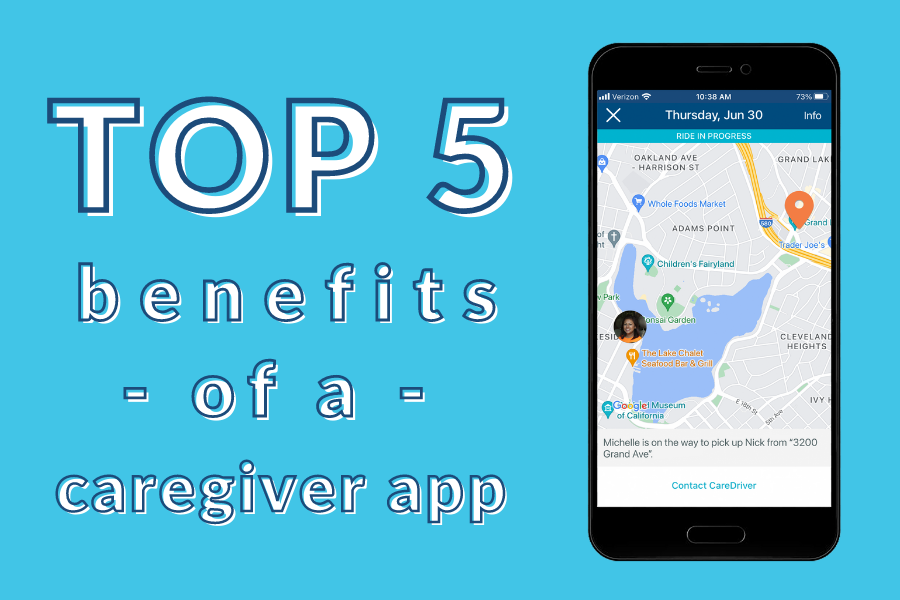How Transportation and After School Programs Can Even the Playing Field for Kids
After school programs and activities can teach kids valuable skills that will set them up for lifetime success. In addition to offering positive experiences and outcomes for youth, high-quality after school programs can provide a safe space for children to explore their interests, learn new things and develop innate abilities.
School-age children and youth spend 80% of their waking hours outside of school and 1 in 5 young people in the U.S. are alone after the school day ends.
Afterschool Alliance — a nonprofit organization that aims to ensure that all children have access to affordable, quality after school programs — quantifies this data further by stating that 7.7 million children nationwide are on their own between the hours of 3 and 6 p.m.
Consistent routines, clear boundaries and attentive care are important components that contribute to the healthy growth, learning and development of children. When a child has too much unstructured free time outside of school with limited (or no) adult supervision, the chances of school absenteeism and disengagement, poor academic performance, the use of drugs and alcohol, and dropping out of high school increase.
Benefits of after school programs and other activities for youth
Channeling a child’s energy and curiosity through well-organized, high-quality activities and programs outside of school can be advantageous for children, families and communities in numerous ways.
Any time a child spends engaging in academic, creative or athletic programs in a supervised, safe environment is likely to be time well spent. For families with working parents, after school activities are an essential solution when they can’t be there to take care of their children due to work schedules. And the more a community is able to support the well-being of children and families, the more engaged members of the community become.
After school programs and activities can really be a win-win for everyone involved. Some of the many benefits include:
Development of emotional, cognitive, academic and social skills
Increased self-esteem and confidence
Reduction of risky choices and behaviors
Improved academic interest and performance
Promotion of both mental and physical health
A sense of stability in an encouraging and safe environment
Assistance for working families
Different Types of After School Programs and Activities
According to You for Youth, after school activities have played a role in youth development in the U.S. since the late 19th century, when local clubs began offering learning and recreation programs for children. The breadth of after school offerings has significantly expanded since then, and now includes programs focused on specific academic subjects, artistic pursuits, competitive sports and even on-the-job training opportunities or internships (for older children).
Though the focus may differ, the goal of all of these programs is the same: to provide healthy and safe opportunities for children in their spare time that will ultimately help them reach their full potential.
It’s important to note that not all after school programs are created equal. If you’re looking for a program for your child, be sure to do your research, ask questions, check references and visit a facility or program in person before deciding if it’s a good fit for you and your family.
Additionally, different activities will be appropriate and beneficial depending on a child’s age. Afterschool Alliance provides helpful information that can assist you in identifying high-quality afterschool programs based on a child’s age range.
A few better known or popular types of after school programs include:
4-H Afterschool: 4‑H after school and in-school programs provide a positive environment and hands-on activities using 4‑H curriculum. 4‑H programs are available in grade schools and high schools.
Boys & Girls Club of America (BGCA): Founded in 1906, the mission of this national nonprofit organization is to “enable all young people, especially those who need it most, to reach their full potential as productive, caring, responsible citizens.” Through the BGCA, kids can access programs focused on a variety of areas including sports and recreation, education, the arts, health and wellness, and workforce readiness.
Bricks 4 Kidz LEGO® After School Program: This franchise offers STEM-based enrichment activities including robotics workshops, coding classes, special events and after school programs that enable children to learn through building and playing with LEGO® bricks.
Major League Baseball Pitch, Hit & Run: This official skills event of Major League Baseball offers a free sports program to after school sites and youth organizations interested in hosting local competitions to engage students in physical activity.
The Crucial Role of Transportation in After School Activities and Programs
Unfortunately, access to high-quality after school programs is not a given. The ability to locate and enroll in beneficial enrichment activities outside of school is often impacted by numerous factors including family income, neighborhood safety, community resources — and transportation.
While 9 in 10 adults nationwide reported that after school programs are important to their community, more than 19 million children are unable to enroll in an after school programs according to Youth.gov.
“Students who grow up in neighborhoods of concentrated poverty often do not have as many opportunities or resources to participate in these programs,” states a 2019 article by City Year. “This can place them at a disadvantage in terms of both skill development and the strength of their college applications, where experience beyond the classroom — whether athletics, scouting, the arts or volunteer opportunities — is critically important.”
HopSkipDrive aims to ensure equal access to opportunities for all children
The bottom line: Many parents and families simply do not have the necessary resources to get their kids where they need to go — and lots of kids are missing out on opportunities that could make a world of difference in their lives.
New models of youth transportation such as HopSkipDrive can help to ensure fair and equal access to after school programs, thereby leveling the playing field. Just listen to what a few parents who use the HopSkipDrive platform have to say:
“I just wanted to say thanks for the terrific service you have provided for us this year. The CareDrivers have been absolutely wonderful, and have been a godsend for me. I can rest comfortably being at work, knowing my daughter is able to be in after school programs and that she has a safe and dependable ride home.”
“It’s challenging enough to juggle my full-time job and parenting, but thanks to the wonderful, reliable and trusted service offered by HopSkipDrive, I have one less thing to worry about! HopSkipDrive allows me to work without interruption during the day and gives my daughter an opportunity to pursue her extracurricular activities, which might not have been possible otherwise.”
“I can’t just leave work to pick my daughter up to take her to dance class. I want to be able to continue to work but still give her all the opportunities that she can have.”
“HopSkipDrive has become part of our weekly routine. I have three very busy children at different schools who do football, gymnastics, dance and physical therapy. I work full-time and now I’m able to attend my own activities while HopSkipDrive safely drives my children to their various activities.”


